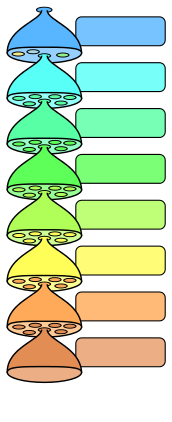
En botánica y sistemática, una serie es una subdivisión de un género, un rango taxonómico inferior al de la sección (y subsección) pero superior al de las especies.[1]
Las secciones y/o series se utilizan típicamente para ayudar a organizar géneros muy grandes, que pueden tener cientos de especies.
Comercialización de cultivares
El término "serie" también se utiliza (en la comercialización de semillas) para agrupar cultivares, pero este término no tiene un estatus formal con ese significado en el ICNCP.[2]
Botánica
En plantas, series debe ser en latín -emates y en español -enománidos, en plantas en ejemplo por "Prenallomates" (prenaloenománidos), en algas, series debe ser en latín -oteres y en español -otímidos, en algas en ejemplo por "Somoteres" (somotímidos), y en hongos, series debe ser en latín -aricomycetes y en español -aricómidos, en hongos en ejemplo por "Adrifomaricomycetes" (adrifomararicómidos).
Zoología
Series de zoología son usados en los reinos Animalia, Protozoa, y en los dominios Archaea y Bacteria en sufijo en latin emenis o en español emínidos.
Referencias
- ↑ Article 4 in McNeill, J.; Barrie, F.R.; Buck, W.R.; Demoulin, V.; Greuter, W.; Hawksworth, D.L.; Herendeen, P.S.; Knapp, S. et al. (2012). International Code of Nomenclature for algae, fungi, and plants (Melbourne Code) adopted by the Eighteenth International Botanical Congress Melbourne, Australia, July 2011. Regnum Vegetabile 154. A.R.G. Gantner Verlag KG. ISBN 978-3-87429-425-6.
- ↑ Glossary in Brickell, C.D.; Alexander, C.; David, J.C.; Hetterscheid, W.L.A.; Leslie, A.C.; Malecot, V.; Jin, X.; Editorial committee et al. (2009). International Code of Nomenclature for Cultivated Plants (ICNCP or Cultivated Plant Code) incorporating the Rules and Recommendations for naming plants in cultivation, Eighth Edition, Adopted by the International Union of Biological Sciences International Commission for the Nomenclature of Cultivated Plants. International Association for Plant Taxonomy and International Society for Horticultural Science. Archivado desde el original el 13 de agosto de 2011. Consultado el 13 de junio de 2020.
